2010 to the Present: New Challenges
2010 to the Present: New Challenges
Singapore continues to face structural challenges as well as short-term obstacles.
A Mature Phase of Growth
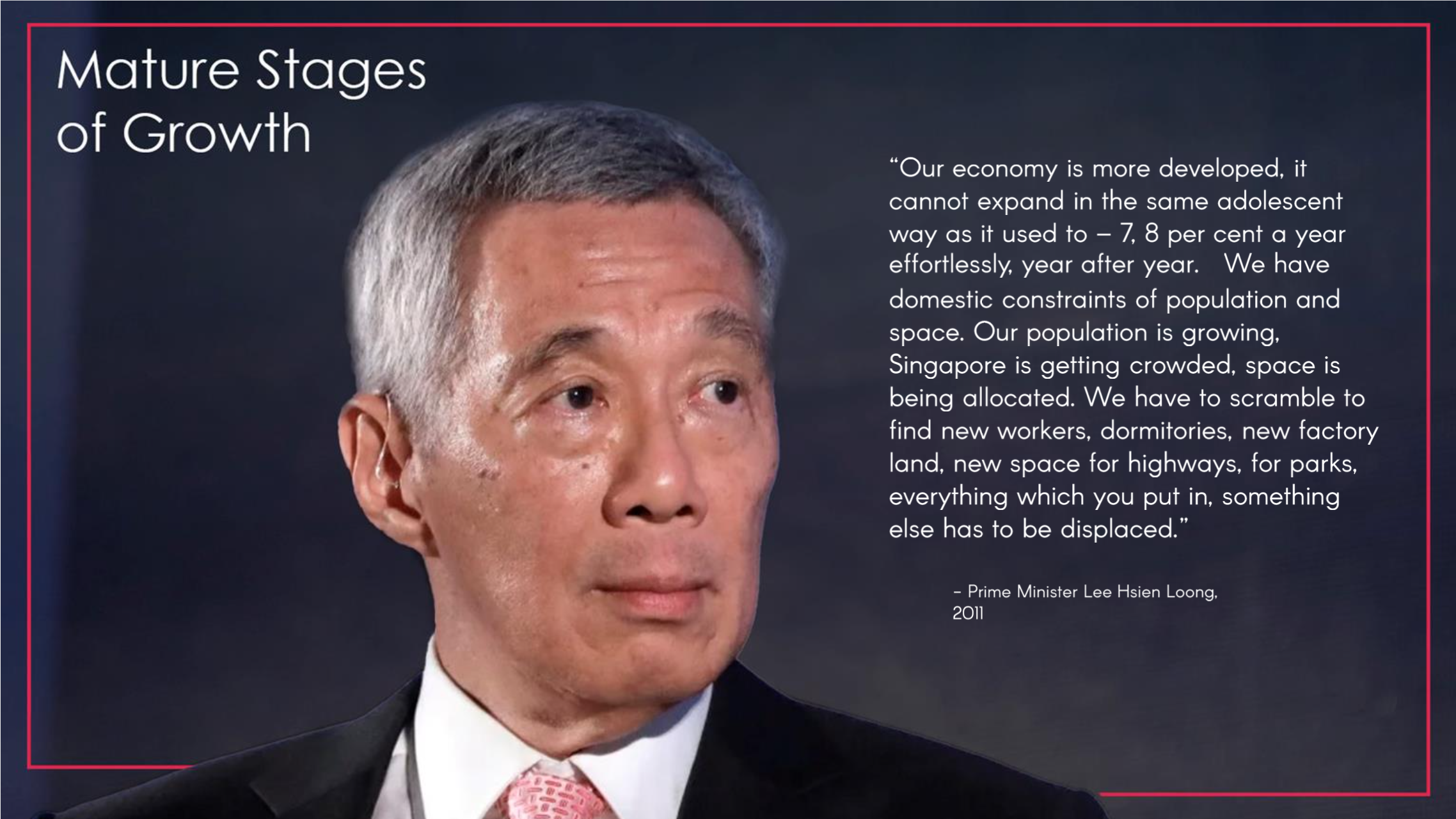
By 2011, it was clear that as Singapore’s economy had matured, growth would slow to 3-5 % per year. Even though our innovations (e.g. Jurong Rock Cavens) have stretched our limits, the fact is that resource and land constraints remain.
Ageing Population
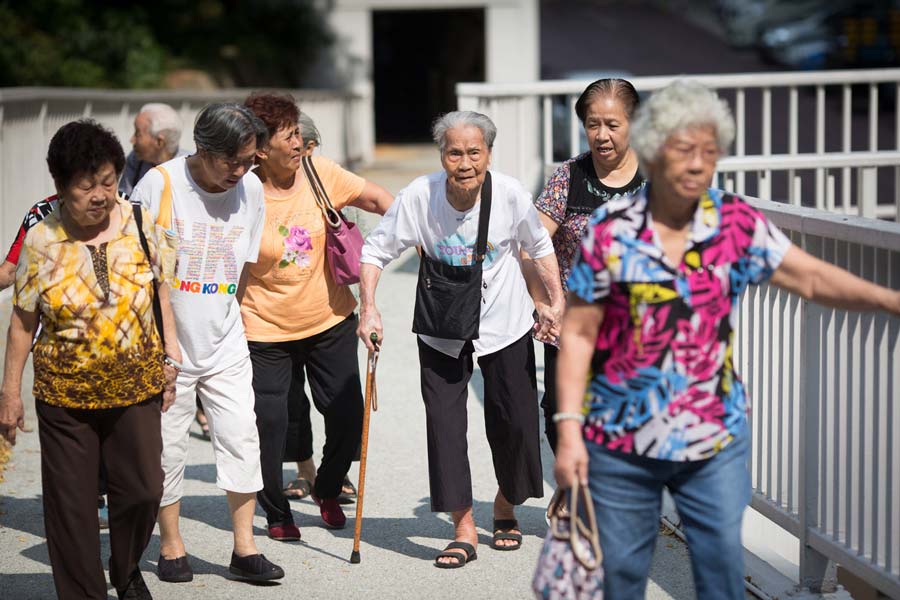 (Image: Population.sg)
(Image: Population.sg)
The life expectancy in Singapore has risen to from 76.1 in 1990 to 83.2 in 2018. By 2030, one in four Singaporeans will likely be older than 65. The median age is projected to rise from 39 in 2011 to 47 in 2030.
Moreover, efforts to boost the natural rate of population growth have had little success. Singapore's Total Fertility Rate (TFR) was 1.14 in 2018 -- below the replacement rate of 2.1.
The ageing population will have a significant impact on Singapore’s economy in the long term.
Without a sufficient pool of younger workers to replace older workers, our economy could start to lose its dynamism and vibrancy. Talent is a critical component for companies in the knowledge-based economy, but companies could struggle to find the talent they need here. This would make Singapore far less attractive than its neighbours, which have younger population bases.
The ageing workforce also puts strains on other parts of the Singapore economy, especially our fiscal position. Income tax collections could start to decline with a smaller workforce, which would constrain the government’s ability to spend. At the same time, there will be a need to continue raising social spending, which has risen from S$15 billion in 2009 to S$30 billion in 2018.
Rise in Populist Nationalism and Anti-Trade/Globalisation Forces
In 2016, Britain’s vote to leave the European Union shocked many, and disquieted the notion of European Unity and the common market. While there were socio-economic and political reasons that prompted the majority of Britons to vote Leave, it can be seen as a symptom of a larger rise in populist politics in the world.
A by-product of populist sentiments is the rise of protectionist policies, and the rejection of globalisation, free trade, and open borders.
US-China trade tensions: In 2018 and 2019, the world’s two largest economies started levying tariffs on each other, which dampened global trade and the world economy.
The rising tensions have also spilled over into the technology sector, such as when the US government banned US companies from using technology from Huawei. While the US and China signed a pact to ease trade tensions in early 2020, this hasty deterioration of trade relations underscore how quickly Singapore's external environment can shift.
The rise of protectionism reduces trade, and raises the prices of imports and exports. It also slows growth rates for countries.
In the long run, the rise of populist sentiments also brings skepticism multi-lateral organisations and fora, such as the United Nations (UN), World Trade Organization (WTO), and the International Monetary Fund (IMF).
For instance, the US pulled out of the Paris Agreement unilaterally in June 2017, threatening to overturn progress made so far in the landmark climate change pact. However, the US under President Joe Biden has since rejoined the agreement (February 2021). Likewise, the WTO, which is the primary forum for countries to resolve trade conflicts has been criticsed for being complacent and ineffective.
This puts Singapore in a difficult spot, as small countries require such organisations and international law to have a voice and resolve conflicts with larger powers.
As PM Lee said, multilateral organisations such as the UN and WTO are critical to Singapore’s survival:
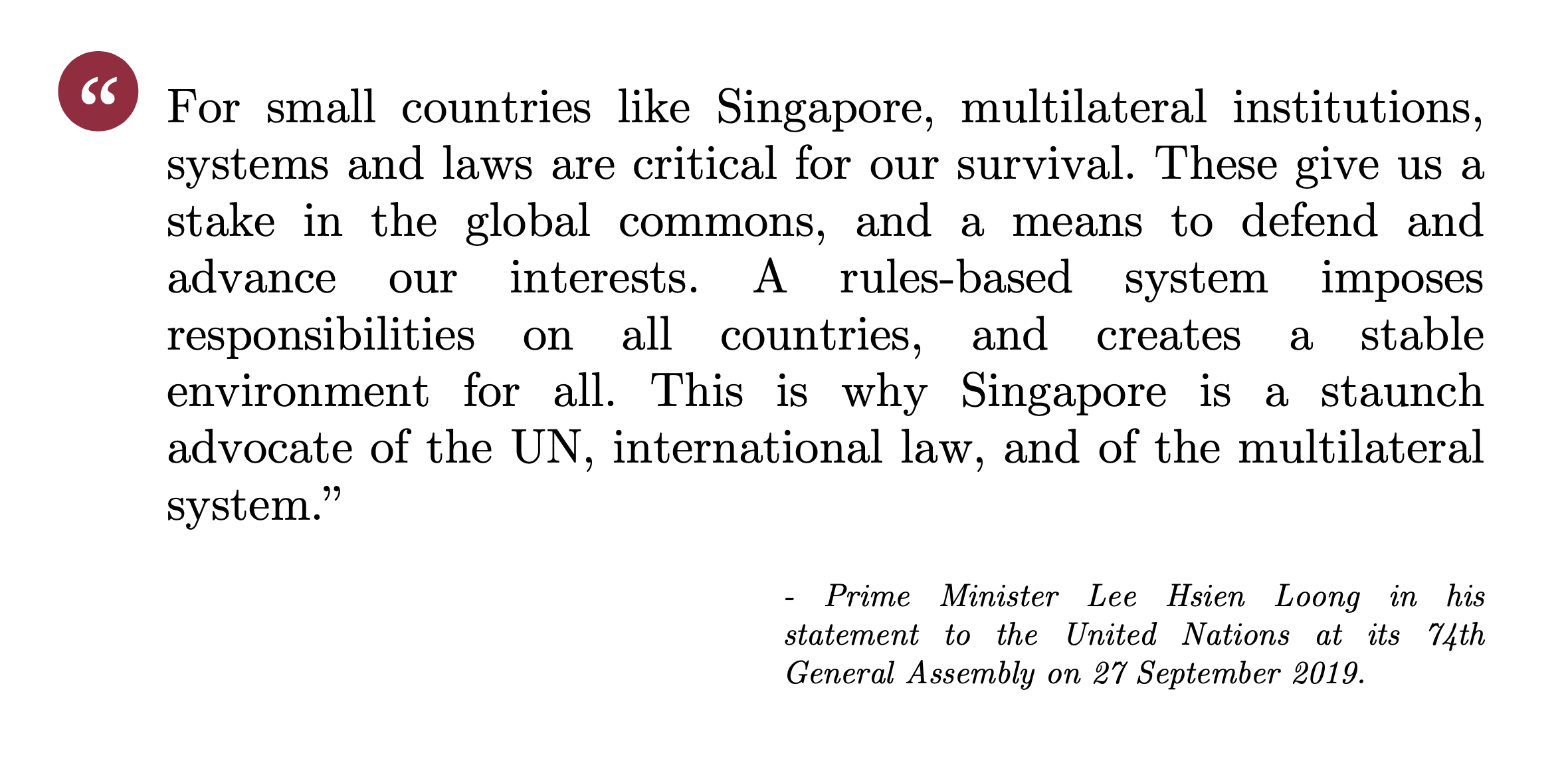
Digital Disruption: A Source of Challenges and Opportunities
 (Image: National Research Foundation, Prime Minister’s Office Singapore)
(Image: National Research Foundation, Prime Minister’s Office Singapore)
Technology has reshaped the way we work, live and play – from ride- and house-sharing apps to delivery apps, to social media which has reshaped democracies, it is clear that technological disruption is only gaining momentum.
The advent of technologies such as artificial intelligence, 3D printing and robotics has revolutionised manufacturing, while the ability to harness and analyse large amounts of data has given companies new ways to understand their consumers. It has enabled start-ups to scale quickly and disrupt markets.
This offers a range of new challenges and opportunities for Singapore for Singapore.
On the one hand, technology enables users to increase productivity, scale innovation, and develop sustainable solutions that could generate greater economic value. However, digital disruption could also create social issues.
For instance, with the rise of technological capabilities and AI, which are capable of during human efforts, capable many workers have been retrenched as their skills have become obsolete. The rise of ride-sharing and delivery apps have also created a gig economy, and a burgeoning population of drivers and delivery riders. However, the gig economy is problematic as workers are not protected, at present, with the same labour rights and laws as traditional workers.
The challenge for governments around the world, including Singapore, is managing these challenges while positioning the economy to benefit from these forms of digital disruption.
New Competition from Regional Rivals
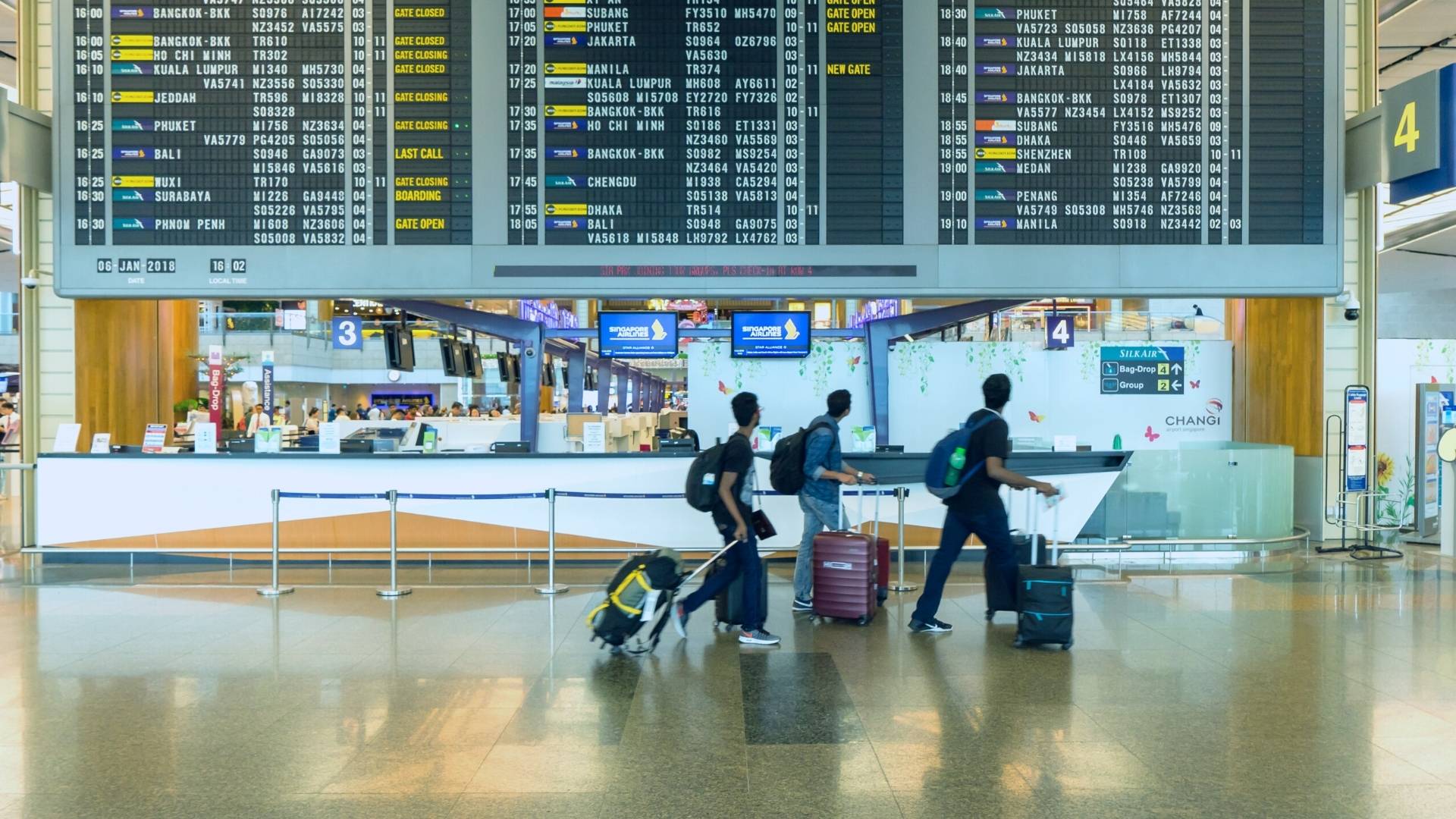 (Image: Gov.sg)
(Image: Gov.sg)
Singapore remains one of the top destinations for investment largely because it has kept its status as a key transport, financial, maritime and technology hub. However, major cities around the region are challenging Singapore in various ways.
Bangkok and Kuala Lumpur are aiming to be the regional hubs for air travel. The governments of both countries have spent massively to upgrade existing airport infrastructure. There is hence greater impetus for Singapore to continue being forward-looking and stay ahead of the competition.
In addition, China’s Belt and Road Initiative will see billions of dollars being poured into the region to build infrastructure, from roads to ports. While stronger connectivity helps keep lines of communication open, some of these ports and airports could rise to become our competitors along the way.
Trading volume on the Singapore Exchange has also fallen over the years, compared to stock markets in emerging markets like Thailand, Vietnam and the Philippines.COVID-19
In December 2019, the first cases of a mysterious, lethal pneumonia appeared in Wuhan, China. By the turn of the new year, the World Health Organisation (WHO) declared this virus outbreak a public health emergency of international concern. The virus was given a name – COVID-19 (Coronavirus Disease 2019) – and in March 2020, the contagion was characterised as a worldwide pandemic.
 (Image: Computer-generated representation of COVID-19 virions (SARS-CoV-2) under electron microscope by Felipe Esquivel Reed via Wikimedia Commons)
(Image: Computer-generated representation of COVID-19 virions (SARS-CoV-2) under electron microscope by Felipe Esquivel Reed via Wikimedia Commons)
A multitude of responses to COVID-19 was activated as it spread. Many countries, such as China, Australia, and New Zealand, closed their borders and went under lockdown. The impact of the lockdowns prompted governments to take strong fiscal action, spending millions to shore up their economies, businesses, and livelihoods.
Between 7 April and 1 June 2020, Singapore entered into a “circuit breaker” period, where travel and social restrictions kicked in, and most workplaces were shut. This came as community clusters formed, including in migrant worker dormitories. A decisive move to curb the spread of the infection was necessary.
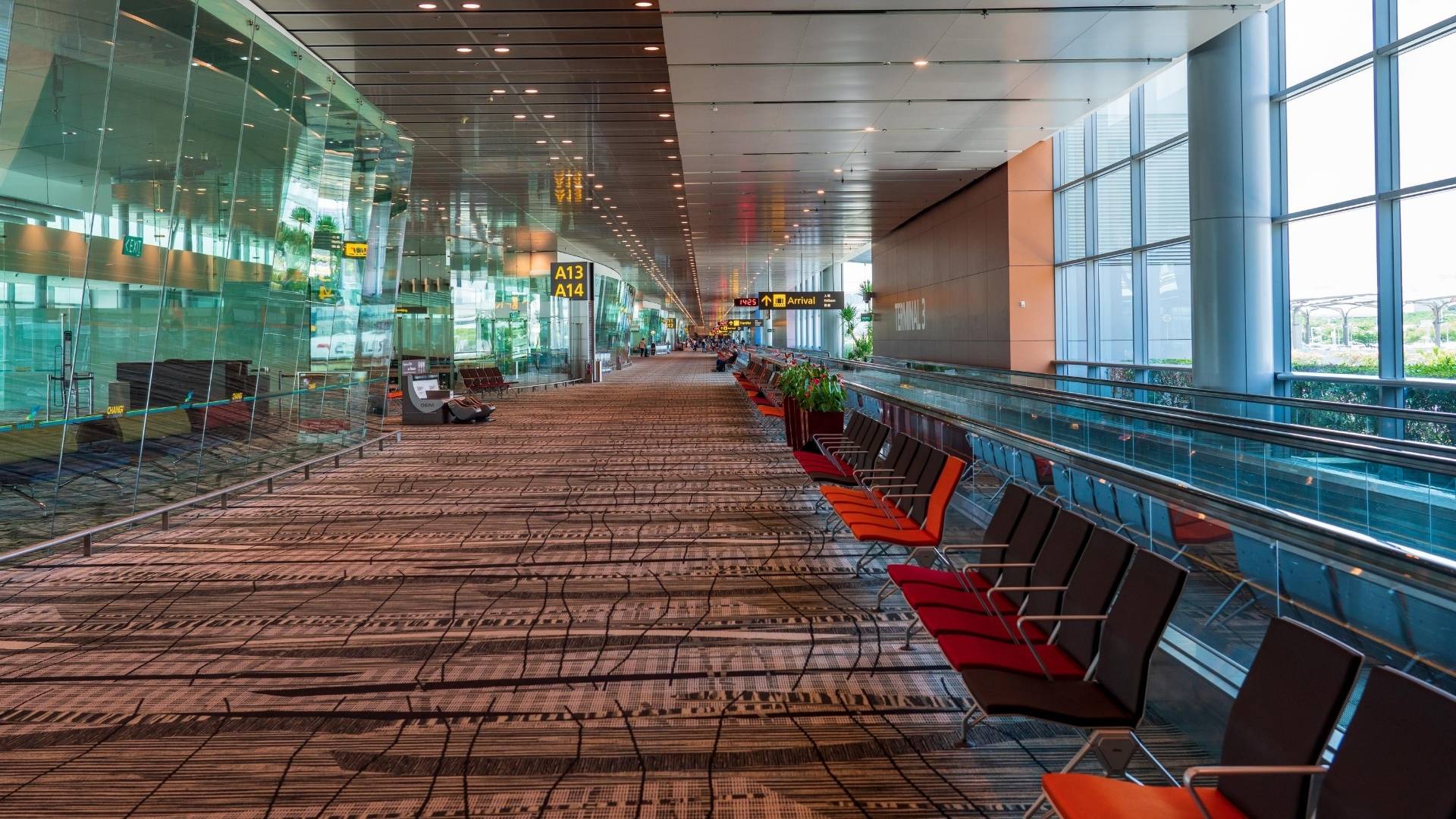 (Image: Gov.sg)
(Image: Gov.sg)
As a small country deeply plugged into global trade, Singapore’s economy was hit. Amid the global economic slowdown and travel restrictions, external demand fell. Supply chain disruptions and the circuit breaker measures also stymied overall growth.
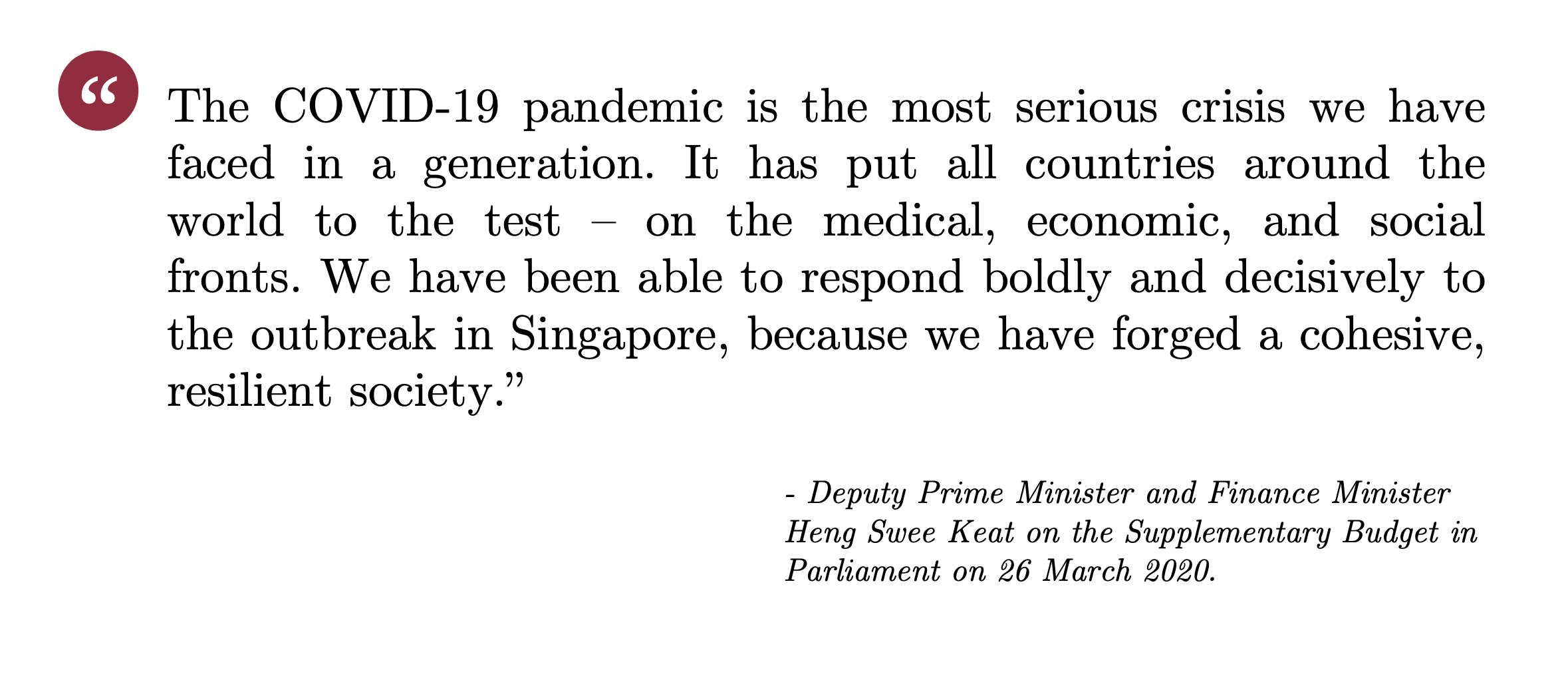
In February 2020, Prime Minister Lee Hsien Loong said the economic impact of COVID-19 was already more significant than that of SARS (Severe Acute Respiratory Syndrome) in 2003. Singapore experienced its worst full-year recession since independence, with the economy shrinking 5.4% in 2020 – worse than the 1.3% contraction during the Global Financial Crisis in 2009.
The pandemic had an uneven impact on different sectors of Singapore’s economy. Industries such as accommodation, air transport, arts, entertainment, and recreation were among the most severely affected, given the restrictions in travel and large social gatherings. For instance, in 2020, visitor arrivals plummeted 85.7% to reach the lowest in about four decades, while tourism receipts dropped 82.6%.
Jobs and employment were hit. In the third quarter of 2020, Singapore’s unemployment rate reached a 16-year high.
However, with one of the highest vaccination rates globally and a low overall death toll, Singapore has been ranked among the top places in the world in Bloomberg’s April 2021 COVID Resilience Ranking, a monthly study that looked at where the pandemic was being handled most effectively.

